 Facebook
Facebook
 X
X
 Instagram
Instagram
 TikTok
TikTok
 Youtube
Youtube
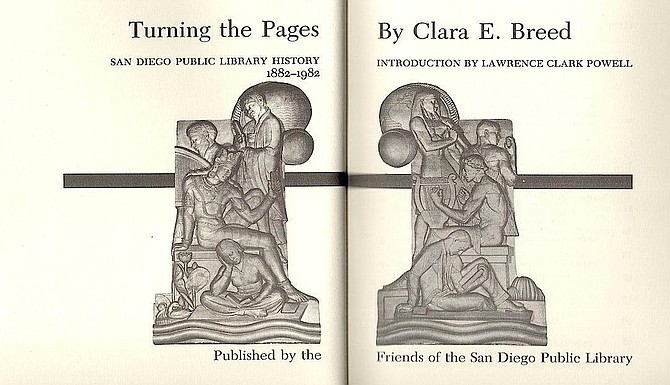
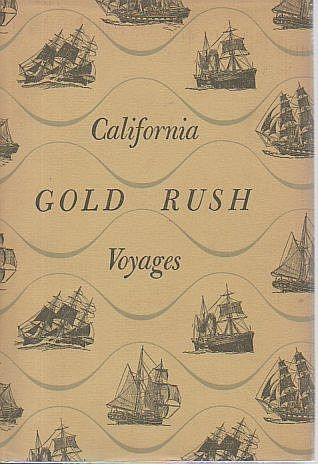
FRIDAY MAY 14, 1849 At 4 P.M. weighed anchor & at 4V2 underweigh for San Diego where we arrived soon after noon & 24 hours from Santa Barbara. This is the meanest place of all, not a morsel of fresh provissions & the town is 4 miles from the anchorage. The harbour is good but the tide very Strong. A Ship in entering can pass through the Kelp or can Reef outside of it just as circumstances may govern. I passed round it in 12 fms water. 4 fms I carried until up with the Bluff, then three for about lA mile when we depened into 10 & 12 fms.
In entering keep within 100 yards of the Bluff on the larboard side & within half your width of the point on the North Entrance of the harbour.
John E. Pomfret, editor California Gold Rush Voyages, 1848-1849 1954
IF CALIFORNIAN LAW ALLOWS the Catholic Church to hold a weekly bingo night for its congregation in which the victors are rewarded with a cuddly toy, then the Indians can lay on 24-hour bingo for $500,000 cash prizes or more.
And that is what the tiny band of Sycuan Indians have done on their meager ‘reservation’ about 40km east of San Diego. Like the City of London, it is a single square mile (2.6sq km). A decade ago it was an island of poverty surrounded by the increasingly prosperous landscape of southern California. It had abysmal roads, poor health services and sub-standard housing....
There are 95 Sycuans in the band, about a third of whom work for the casino, including the 20-strong tribal police force, who wander the gaming tables with guns at their hips watching the profits flow in. The punters come mostly from the San Diego area: Latinos in the service industry; Chinese small businessmen; Anglo-American retirees who would rather squander their pension on a night at the tables than sit in front of the television.
And the profits are sizable. The tribe is run by a seven-member council, headed by an elected chairman, the modern-day chief. In the past ten years they have ensured that tribe members receive a tax-free annual income (they will not say how much), free housing and scholarships for their children.
Around the corner from the casino there is further evidence of some of the millions frittered away by punters: two sparkling fire engines belonging to the tribal fire brigade, a medical clinic, several small ambulances and a fleet of Sycuan coaches....
If current trends continue, the Sycuans will make $1 million per capita for many years to come. To qualify as a member you must show that you have a significant amount of tribal blood — enough to persuade the tribal council that you deserve an income for life paid for by the punters of San Diego.
Phil Reeves BBC Worldwide April 1993
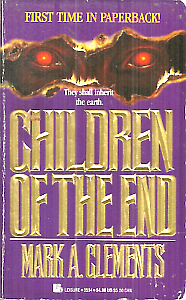
AFTER THE NIGHTLY NEWS BROADCAST was over, Tony got in his car and went for a drive. He didn’t feel like sleeping, but he didn’t feel like going to a bar, either. Maybe he’d just cruise down to Sunset Cliffs and stare at the Pacific for a while.
There wasn’t much traffic on University Avenue for a Friday night, he noticed.
He wondered if people were scared of the Cannibal; the city’s new celebrity hadn’t struck yet today. According to the news, the two assaults in El Cajon were not being credited to the Cannibal, for the simple reason that there had been no mauled corpse left behind. One victim had been critically injured, but survived, and the other — a child — had simply disappeared....
Suddenly he realized he’d turned south on Sixth Avenue. The neighborhood was Hillcrest, which had a strong personal identity built around its high population of gays. There were a lot of good restaurants and shops here; the streets were still bustling with people. But Tony knew why he’d turned onto Sixth Avenue — farther south, it formed the western border of Balboa Park.
Balboa Park had a split personality, marked by the deep canyon through which Highway 163 ran. The east side was the popular, exciting character: it contained the San Diego Zoo, theaters, and the museums of El Prado. The west side was the practical, introspective one, offering little more than grassy lawns, jogging paths and shade trees. The east side was outgoing, bustling with both tourists and locals even late at night. But after dark the west side, poorly lit and without cultural facilities, drew mostly the homeless, the lost — and those who preyed on them, and on one another.
As the park approached, Tony looked over at it. Here and there, homeless people clustered on the grass with their shopping carts full of junk encircling them like Conestoga wagons in Indian country. Elsewhere, Tony knew, well beyond the reach of the streetlights, other figures moved. Some alone, some in groups. Looking for things. Drugs, sex, trouble.
Rolling down his window, Tony inhaled the smells of the park: wet grass, freshly sprinkled; eucalyptus leaves; dust. From somewhere in the darkness came a hoot, and a raucous laugh. His heart beat harder.
Up ahead, bright lights glared on a mob of people across the street from the park; Tony knew what was going on even before he got there. There was a medical center there that included an abortion clinic, and every few months, a group of Right-to-Life advocates would demonstrate in front of it. Tony and Ed Winston had had to keep an eye on these affairs when they were working the neighborhood; although the demonstrators seldom got violent, they could get loud, disturbing the occupants of nearby apartment houses....
When he reached the stoplight at the end of the block, he turned left. The street connected the two halves of the park, spanning the major canyon on a long, graceful bridge and becoming El Prado on the other side. But Tony turned left again before he reached the bridge, and drove slowly along a winding lane. It was a dark street, but not nearly as dark as the heavily wooded canyons that dropped down on his right.
He and Ed Winston had often parked their cruiser on this street and walked down one of the dirt paths that folded and wound through the canyons. Creeping down in the darkness with their big flashlights turned off in their hands, their thumbs over the switches, searching for drug deals or homosexual trysts or whatever. Ed had had a passion for busting people down there, for “making this place safe again.” ...
Without realizing it, Tony was driving slower and slower.
At the time, he hadn’t recognized the symptoms of Ed’s growing paranoia — but he should have. As the months went by, Ed talked more and more about the fact that San Diego’s record of police officers killed in the line of duty was worse than New York’s or Chicago’s, and that the ratio of cops per citizen here was less than half that of Los Angeles. Worse, organized street gangs like the Crips and Bloods were increasingly infiltrating Balboa Park.
Mark A. Clements Children of the End 1993
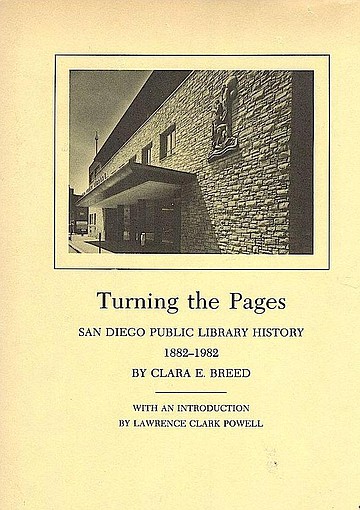
IN 1975 A DIFFERENT KIND OF PRESSURE on the [San Diego Public] Library started with articles in a neighborhood paper criticizing the Library’s policy in not purchasing or even accepting as gifts the “Nancy Drew” and “Hardy Boys” stories for children. For many years the Library’s policy in buying children’s books had been based on careful selection of the best and most interesting titles. This meant not buying books in long series, since they are usually poorly written, have unreal characters and plots that follow a formula, and are somewhat addictive, so that children get into ruts of reading which prevent them from being exposed to books of better quality. The controversy over this resulted in a public hearing at which some of the people attending defended not only “Nancy Drew”, but the “Harlequin” romances for adults, the theory being that reading something — or anything — is better than reading nothing. At the end of a public hearing on this controversy the Library Commission took a somewhat ambiguous stand, deciding that city funds should be spent in accordance with the Library’s book selection policy, but that “Gift-Swap” boxes might be placed in branch libraries where books below the Library’s standards could be dropped by donors and taken home by anyone who wanted them, and also that other gift books which are entertaining and “promise good circulation” could be accepted and placed on library shelves without cataloging.
Clara E. Breed Turning the Pages 1983
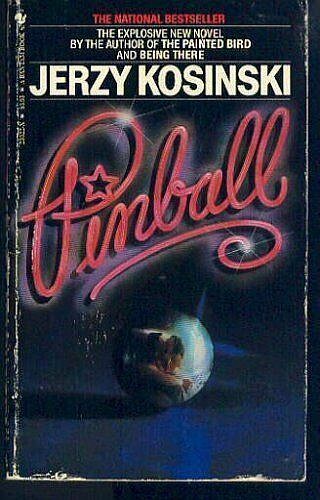
HE HAD SENSED no impending drama on that quiet day just two and a half years ago when he left his small ranch and drove out of the Anza Borrego Desert toward San Diego. He had no special purpose in mind beyond staying a day or two in a good hotel and visiting a few bookstores. In San Diego, he drove aimlessly for a while. Then he crossed the Coronado Bridge, looking down at the harbor and the heavy silhouettes of the ships of the Pacific Fleet. Soon he found himself in the driveway of the Hotel Del Coronado, where he had not been since his freshman year.
He parked his Jeep and wandered around the hotel, staring in wonderment at its Victorian excesses — the gingerbread terraces, balconies, and verandas stacked one on top of the other, the shingled roof and turrets, the splendor of the entrance.
He passed through the interior garden court, peered into the Crown Room, where a large banquet for Arab dignitaries was taking place, then walked along the Hall of History, glancing at photographs of the hotel in its various transformations over a hundred years.
Jerzy Kosinski Pinball 1982
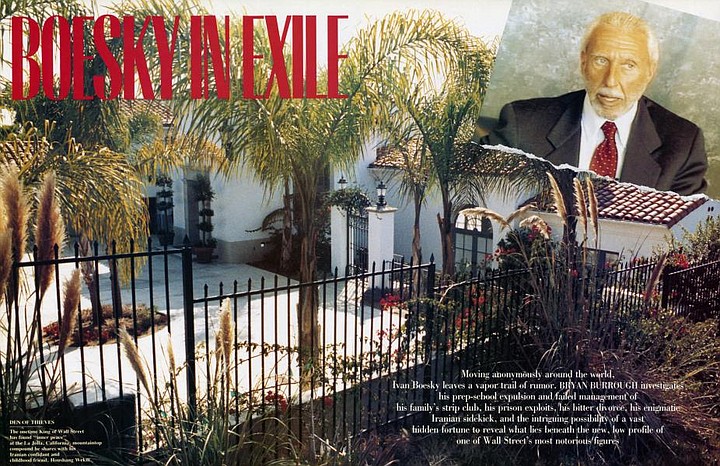
ONE OF TWO HOMES in a secluded compound atop this scrub-strewn mountain is the exclusive San Diego suburb of La Jolla, [Ivan] Boesky’s retreat is the head-quarters of his leisurely new regimen of wine, women, and weight lifting. Despite stories of a new life in France, the onetime King of Wall Street has in fact spent much of the three years since his release from prison decompressing here, 500 yards downhill from a giant concrete cross, visible miles out to sea, which marks the summit of Mount Soledad....
Boesky’s home, set back and invisible from the street, is equipped with everything he could want short of a presidential pardon: five bedrooms, six and a half baths, a sauna, a Jacuzzi, a wine cellar, gardens, four airy patios, a three-car garage, and, best of all, a warm, pale-blue swimming pool where Boesky, a sun worshiper, can lie beside a columned Italianate cabana and work on his leathery tan.
The interior of the house, decorated with few personal touches, is furnished in Early Subdivision: cheap sky-blue carpeting, wicker furniture, Renaissance paintings. The vaulted ceilings are crafted of hand-painted cedar. Bay windows in the living room normally afford views of the purplish Pacific a mile away, but a thick morning mist has rolled over the beaches and up the flanks of the mountain....
The second home in Boesky’s La Jolla compound — which a brass plate on the entry gate identifies as “La Casa Blanca” — is owned and occupied by the Wekili family. “Houshang [Wekili] now has control over most if not all aspects of Ivan’s life,” asserts one Boesky family member. “They have this little compound. Someone in the Wekili family is informally assigned to Ivan every day, to take him to lunch, to tea, fishing — anything he wants. Ivan doesn’t realize it. He doesn’t know how difficult he is. He thinks these people just like him....” Boesky has become so dependent on the Wekilis that, over the last three years, he has all but moved into their larger home, which fronts on La Jolla Scenic Drive South and reportedly features limestone floors, imported French fireplaces, and apartments with wet bars for Wekili’s two sons, Alidad, a law student said to resemble Tom Cruise, and Sa’id, a recent law-school graduate who frequently jets in from New York and who is said to worship the fallen trader....
The Wekilis take turns driving Boesky around La Jolla: to dinner at his favorite restaurant, Piatti, in La Jolla Shores; to have his hair colored and nails trimmed at his salon, Alessandro; or down Mount Soledad Road into the gritty next-door town of Pacific Beach, where Boesky works out at Gold’s Gym, a sweaty, low-ceilinged forest of clanging weights and oily, tank-topped bodybuilders....
[Boesky’s secretary, Janice] Rheel says that the raucous parties were one of the things that drove her to the breaking point, as they have some of Boesky’s La Jolla neighbors....
“The parties are very, very young girls, some from Gold’s Gym, who’ll do anything for a buck and a fuck,” says Rheel. “It’s all sex, interlocking bodies — at least that’s what [Boesky’s] kids tell me. People lying all over. It’s gross. His kids get upset because there’s all these young girls. At Ivan’s age, he shouldn’t be carrying on like this....”
The compound in La Jolla, the kind of chic, palm-lined California suburb where even the veterinarian offers valet parking, has proved the perfect tonic. The surfers and beach bums don’t know who he is. The society doyennes don’t care. “Yes, he’s been around for some time,” sighs Nancy Hester, the wife of a local architect. “But I can tell you this about Mr. Boesky: no one gives a shit about him, and no one cares. Why should we? This place is like heaven on earth. Why should he matter?”
No one outside the compound has been able to decipher its daily routine. “My mother-in-law from New Jersey spies on him all the time,” says one neighbor, who sometimes joins her backyard espionage.
“We can see right into his bedroom. I see him in there. The room’s always glowing.... I think he watches a lot of television.”...
Amid La Jolla’s tony oceanside boutiques and health clubs, Boesky’s is a fleeting presence. He’s been seen sipping coffee at the Pannikin, a landmark cafe, nibbling on a sandwich at the Cottage, an alfresco lunch spot, and reading the paper on the green wooden benches outside tiny Cafe 928. “People see him all over,” says Alyce Quackenbush, social editor of the La Jolla Light. “They see him at the Warwick’s bookstore, the Crown bookstore. There’s all these sightings, but I don’t think anyone’s really sure where he lives. He never goes to any of the big social galas. He’s a real difficult character to pin down. He doesn’t encourage anyone to come up to him. I don’t think anyone’s even approached him.”
Though he appears to spend most of his time alone or with the Wekilis, Boesky has managed to make a few new friends. Several are at Alessandro, the fashionable hair salon where he has kept a regular appointment nearly every other week for the last two years and where his penchant for buying rounds of coffee and scones has made him a favorite with the hairdressers. “He’s real popular in the shop, he’s just so pleasant,” says one, Lori Pavone. “When he comes in, you wouldn’t know he has any money at all. I’ve never seen him in anything other than blue jeans and T-shirts. Never, never a suit, not even a dress shirt. Just T-shirts.”
Boesky’s regular stylist, Voe, trims and tints his hair, using a blond rinse to hide the encroaching gray. One of the manicurists, either Cici or Renee, tends to his cuticles. Boesky always takes time to chat with the salon’s virile, cue-ball-bald owner, Alessandro “Alex” DeRobertis, who has taken him sailing....
Another friend is Barbara Beltaire, the sunburned proprietress of Boesky’s favorite eatery, Piatti
Most nights when in La Jolla, Boesky can be found in Beltaire’s restaurant, hunched over his favorite appetizer, angel-hair pasta with tomato and basil, usually followed by fresh fish or the house special, roast chicken. “He always eats healthy — no fats, no oils,” says Beltaire....
The trouble comes when other diners can’t ignore Boesky. “People say things when he’s in the restaurant,” Beltaire acknowledges. “I’ve had people say, ‘Barbara, how can you serve a man like that?’ Sometimes people get up and walk out. That’s happened several times. It happens to him in New York all the time, he says.”
Beltaire, who feeds her share of vacationing Hollywood types, is sanguine.
“La Jolla is a hideaway for a lot of people,” she says.
“This kind of thing happens here all the time. Just yesterday — this was in the papers — we had the guy who paid one of the largest government fines in history. Tax evasion, I think. He was so nice, just like Ivan. These guys are just so nice, I mean, you’d never know they were crooks.”
Bryan Burrough “Boesky in Exile” Vanity Fair January 1993
The Reader will pay $10 for submissions to "Out of Context" that are selected for publication. Choices must be drawn from books or out-of-town periodicals. Include author, title, date of publication, and your phone number. Send to "Out of Context," 2323 Broadway, San Diego, CA 92102



FRIDAY MAY 14, 1849 At 4 P.M. weighed anchor & at 4V2 underweigh for San Diego where we arrived soon after noon & 24 hours from Santa Barbara. This is the meanest place of all, not a morsel of fresh provissions & the town is 4 miles from the anchorage. The harbour is good but the tide very Strong. A Ship in entering can pass through the Kelp or can Reef outside of it just as circumstances may govern. I passed round it in 12 fms water. 4 fms I carried until up with the Bluff, then three for about lA mile when we depened into 10 & 12 fms.
In entering keep within 100 yards of the Bluff on the larboard side & within half your width of the point on the North Entrance of the harbour.
John E. Pomfret, editor California Gold Rush Voyages, 1848-1849 1954
IF CALIFORNIAN LAW ALLOWS the Catholic Church to hold a weekly bingo night for its congregation in which the victors are rewarded with a cuddly toy, then the Indians can lay on 24-hour bingo for $500,000 cash prizes or more.
And that is what the tiny band of Sycuan Indians have done on their meager ‘reservation’ about 40km east of San Diego. Like the City of London, it is a single square mile (2.6sq km). A decade ago it was an island of poverty surrounded by the increasingly prosperous landscape of southern California. It had abysmal roads, poor health services and sub-standard housing....
There are 95 Sycuans in the band, about a third of whom work for the casino, including the 20-strong tribal police force, who wander the gaming tables with guns at their hips watching the profits flow in. The punters come mostly from the San Diego area: Latinos in the service industry; Chinese small businessmen; Anglo-American retirees who would rather squander their pension on a night at the tables than sit in front of the television.
And the profits are sizable. The tribe is run by a seven-member council, headed by an elected chairman, the modern-day chief. In the past ten years they have ensured that tribe members receive a tax-free annual income (they will not say how much), free housing and scholarships for their children.
Around the corner from the casino there is further evidence of some of the millions frittered away by punters: two sparkling fire engines belonging to the tribal fire brigade, a medical clinic, several small ambulances and a fleet of Sycuan coaches....
If current trends continue, the Sycuans will make $1 million per capita for many years to come. To qualify as a member you must show that you have a significant amount of tribal blood — enough to persuade the tribal council that you deserve an income for life paid for by the punters of San Diego.
Phil Reeves BBC Worldwide April 1993

AFTER THE NIGHTLY NEWS BROADCAST was over, Tony got in his car and went for a drive. He didn’t feel like sleeping, but he didn’t feel like going to a bar, either. Maybe he’d just cruise down to Sunset Cliffs and stare at the Pacific for a while.
There wasn’t much traffic on University Avenue for a Friday night, he noticed.
He wondered if people were scared of the Cannibal; the city’s new celebrity hadn’t struck yet today. According to the news, the two assaults in El Cajon were not being credited to the Cannibal, for the simple reason that there had been no mauled corpse left behind. One victim had been critically injured, but survived, and the other — a child — had simply disappeared....
Suddenly he realized he’d turned south on Sixth Avenue. The neighborhood was Hillcrest, which had a strong personal identity built around its high population of gays. There were a lot of good restaurants and shops here; the streets were still bustling with people. But Tony knew why he’d turned onto Sixth Avenue — farther south, it formed the western border of Balboa Park.
Balboa Park had a split personality, marked by the deep canyon through which Highway 163 ran. The east side was the popular, exciting character: it contained the San Diego Zoo, theaters, and the museums of El Prado. The west side was the practical, introspective one, offering little more than grassy lawns, jogging paths and shade trees. The east side was outgoing, bustling with both tourists and locals even late at night. But after dark the west side, poorly lit and without cultural facilities, drew mostly the homeless, the lost — and those who preyed on them, and on one another.
As the park approached, Tony looked over at it. Here and there, homeless people clustered on the grass with their shopping carts full of junk encircling them like Conestoga wagons in Indian country. Elsewhere, Tony knew, well beyond the reach of the streetlights, other figures moved. Some alone, some in groups. Looking for things. Drugs, sex, trouble.
Rolling down his window, Tony inhaled the smells of the park: wet grass, freshly sprinkled; eucalyptus leaves; dust. From somewhere in the darkness came a hoot, and a raucous laugh. His heart beat harder.
Up ahead, bright lights glared on a mob of people across the street from the park; Tony knew what was going on even before he got there. There was a medical center there that included an abortion clinic, and every few months, a group of Right-to-Life advocates would demonstrate in front of it. Tony and Ed Winston had had to keep an eye on these affairs when they were working the neighborhood; although the demonstrators seldom got violent, they could get loud, disturbing the occupants of nearby apartment houses....
When he reached the stoplight at the end of the block, he turned left. The street connected the two halves of the park, spanning the major canyon on a long, graceful bridge and becoming El Prado on the other side. But Tony turned left again before he reached the bridge, and drove slowly along a winding lane. It was a dark street, but not nearly as dark as the heavily wooded canyons that dropped down on his right.
He and Ed Winston had often parked their cruiser on this street and walked down one of the dirt paths that folded and wound through the canyons. Creeping down in the darkness with their big flashlights turned off in their hands, their thumbs over the switches, searching for drug deals or homosexual trysts or whatever. Ed had had a passion for busting people down there, for “making this place safe again.” ...
Without realizing it, Tony was driving slower and slower.
At the time, he hadn’t recognized the symptoms of Ed’s growing paranoia — but he should have. As the months went by, Ed talked more and more about the fact that San Diego’s record of police officers killed in the line of duty was worse than New York’s or Chicago’s, and that the ratio of cops per citizen here was less than half that of Los Angeles. Worse, organized street gangs like the Crips and Bloods were increasingly infiltrating Balboa Park.
Mark A. Clements Children of the End 1993

IN 1975 A DIFFERENT KIND OF PRESSURE on the [San Diego Public] Library started with articles in a neighborhood paper criticizing the Library’s policy in not purchasing or even accepting as gifts the “Nancy Drew” and “Hardy Boys” stories for children. For many years the Library’s policy in buying children’s books had been based on careful selection of the best and most interesting titles. This meant not buying books in long series, since they are usually poorly written, have unreal characters and plots that follow a formula, and are somewhat addictive, so that children get into ruts of reading which prevent them from being exposed to books of better quality. The controversy over this resulted in a public hearing at which some of the people attending defended not only “Nancy Drew”, but the “Harlequin” romances for adults, the theory being that reading something — or anything — is better than reading nothing. At the end of a public hearing on this controversy the Library Commission took a somewhat ambiguous stand, deciding that city funds should be spent in accordance with the Library’s book selection policy, but that “Gift-Swap” boxes might be placed in branch libraries where books below the Library’s standards could be dropped by donors and taken home by anyone who wanted them, and also that other gift books which are entertaining and “promise good circulation” could be accepted and placed on library shelves without cataloging.
Clara E. Breed Turning the Pages 1983

HE HAD SENSED no impending drama on that quiet day just two and a half years ago when he left his small ranch and drove out of the Anza Borrego Desert toward San Diego. He had no special purpose in mind beyond staying a day or two in a good hotel and visiting a few bookstores. In San Diego, he drove aimlessly for a while. Then he crossed the Coronado Bridge, looking down at the harbor and the heavy silhouettes of the ships of the Pacific Fleet. Soon he found himself in the driveway of the Hotel Del Coronado, where he had not been since his freshman year.
He parked his Jeep and wandered around the hotel, staring in wonderment at its Victorian excesses — the gingerbread terraces, balconies, and verandas stacked one on top of the other, the shingled roof and turrets, the splendor of the entrance.
He passed through the interior garden court, peered into the Crown Room, where a large banquet for Arab dignitaries was taking place, then walked along the Hall of History, glancing at photographs of the hotel in its various transformations over a hundred years.
Jerzy Kosinski Pinball 1982

ONE OF TWO HOMES in a secluded compound atop this scrub-strewn mountain is the exclusive San Diego suburb of La Jolla, [Ivan] Boesky’s retreat is the head-quarters of his leisurely new regimen of wine, women, and weight lifting. Despite stories of a new life in France, the onetime King of Wall Street has in fact spent much of the three years since his release from prison decompressing here, 500 yards downhill from a giant concrete cross, visible miles out to sea, which marks the summit of Mount Soledad....
Boesky’s home, set back and invisible from the street, is equipped with everything he could want short of a presidential pardon: five bedrooms, six and a half baths, a sauna, a Jacuzzi, a wine cellar, gardens, four airy patios, a three-car garage, and, best of all, a warm, pale-blue swimming pool where Boesky, a sun worshiper, can lie beside a columned Italianate cabana and work on his leathery tan.
The interior of the house, decorated with few personal touches, is furnished in Early Subdivision: cheap sky-blue carpeting, wicker furniture, Renaissance paintings. The vaulted ceilings are crafted of hand-painted cedar. Bay windows in the living room normally afford views of the purplish Pacific a mile away, but a thick morning mist has rolled over the beaches and up the flanks of the mountain....
The second home in Boesky’s La Jolla compound — which a brass plate on the entry gate identifies as “La Casa Blanca” — is owned and occupied by the Wekili family. “Houshang [Wekili] now has control over most if not all aspects of Ivan’s life,” asserts one Boesky family member. “They have this little compound. Someone in the Wekili family is informally assigned to Ivan every day, to take him to lunch, to tea, fishing — anything he wants. Ivan doesn’t realize it. He doesn’t know how difficult he is. He thinks these people just like him....” Boesky has become so dependent on the Wekilis that, over the last three years, he has all but moved into their larger home, which fronts on La Jolla Scenic Drive South and reportedly features limestone floors, imported French fireplaces, and apartments with wet bars for Wekili’s two sons, Alidad, a law student said to resemble Tom Cruise, and Sa’id, a recent law-school graduate who frequently jets in from New York and who is said to worship the fallen trader....
The Wekilis take turns driving Boesky around La Jolla: to dinner at his favorite restaurant, Piatti, in La Jolla Shores; to have his hair colored and nails trimmed at his salon, Alessandro; or down Mount Soledad Road into the gritty next-door town of Pacific Beach, where Boesky works out at Gold’s Gym, a sweaty, low-ceilinged forest of clanging weights and oily, tank-topped bodybuilders....
[Boesky’s secretary, Janice] Rheel says that the raucous parties were one of the things that drove her to the breaking point, as they have some of Boesky’s La Jolla neighbors....
“The parties are very, very young girls, some from Gold’s Gym, who’ll do anything for a buck and a fuck,” says Rheel. “It’s all sex, interlocking bodies — at least that’s what [Boesky’s] kids tell me. People lying all over. It’s gross. His kids get upset because there’s all these young girls. At Ivan’s age, he shouldn’t be carrying on like this....”
The compound in La Jolla, the kind of chic, palm-lined California suburb where even the veterinarian offers valet parking, has proved the perfect tonic. The surfers and beach bums don’t know who he is. The society doyennes don’t care. “Yes, he’s been around for some time,” sighs Nancy Hester, the wife of a local architect. “But I can tell you this about Mr. Boesky: no one gives a shit about him, and no one cares. Why should we? This place is like heaven on earth. Why should he matter?”
No one outside the compound has been able to decipher its daily routine. “My mother-in-law from New Jersey spies on him all the time,” says one neighbor, who sometimes joins her backyard espionage.
“We can see right into his bedroom. I see him in there. The room’s always glowing.... I think he watches a lot of television.”...
Amid La Jolla’s tony oceanside boutiques and health clubs, Boesky’s is a fleeting presence. He’s been seen sipping coffee at the Pannikin, a landmark cafe, nibbling on a sandwich at the Cottage, an alfresco lunch spot, and reading the paper on the green wooden benches outside tiny Cafe 928. “People see him all over,” says Alyce Quackenbush, social editor of the La Jolla Light. “They see him at the Warwick’s bookstore, the Crown bookstore. There’s all these sightings, but I don’t think anyone’s really sure where he lives. He never goes to any of the big social galas. He’s a real difficult character to pin down. He doesn’t encourage anyone to come up to him. I don’t think anyone’s even approached him.”
Though he appears to spend most of his time alone or with the Wekilis, Boesky has managed to make a few new friends. Several are at Alessandro, the fashionable hair salon where he has kept a regular appointment nearly every other week for the last two years and where his penchant for buying rounds of coffee and scones has made him a favorite with the hairdressers. “He’s real popular in the shop, he’s just so pleasant,” says one, Lori Pavone. “When he comes in, you wouldn’t know he has any money at all. I’ve never seen him in anything other than blue jeans and T-shirts. Never, never a suit, not even a dress shirt. Just T-shirts.”
Boesky’s regular stylist, Voe, trims and tints his hair, using a blond rinse to hide the encroaching gray. One of the manicurists, either Cici or Renee, tends to his cuticles. Boesky always takes time to chat with the salon’s virile, cue-ball-bald owner, Alessandro “Alex” DeRobertis, who has taken him sailing....
Another friend is Barbara Beltaire, the sunburned proprietress of Boesky’s favorite eatery, Piatti
Most nights when in La Jolla, Boesky can be found in Beltaire’s restaurant, hunched over his favorite appetizer, angel-hair pasta with tomato and basil, usually followed by fresh fish or the house special, roast chicken. “He always eats healthy — no fats, no oils,” says Beltaire....
The trouble comes when other diners can’t ignore Boesky. “People say things when he’s in the restaurant,” Beltaire acknowledges. “I’ve had people say, ‘Barbara, how can you serve a man like that?’ Sometimes people get up and walk out. That’s happened several times. It happens to him in New York all the time, he says.”
Beltaire, who feeds her share of vacationing Hollywood types, is sanguine.
“La Jolla is a hideaway for a lot of people,” she says.
“This kind of thing happens here all the time. Just yesterday — this was in the papers — we had the guy who paid one of the largest government fines in history. Tax evasion, I think. He was so nice, just like Ivan. These guys are just so nice, I mean, you’d never know they were crooks.”
Bryan Burrough “Boesky in Exile” Vanity Fair January 1993
The Reader will pay $10 for submissions to "Out of Context" that are selected for publication. Choices must be drawn from books or out-of-town periodicals. Include author, title, date of publication, and your phone number. Send to "Out of Context," 2323 Broadway, San Diego, CA 92102
Comments